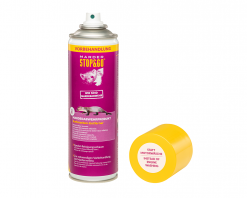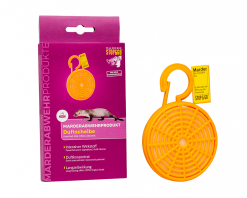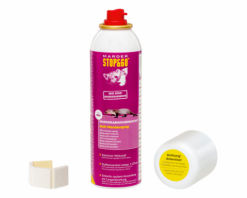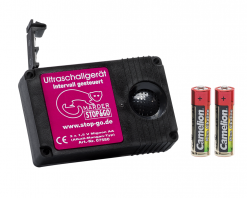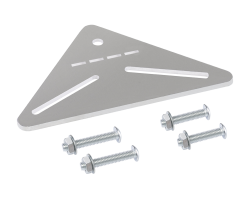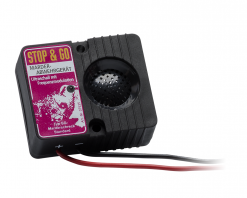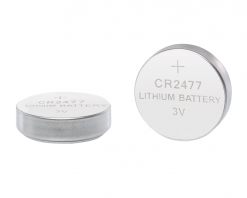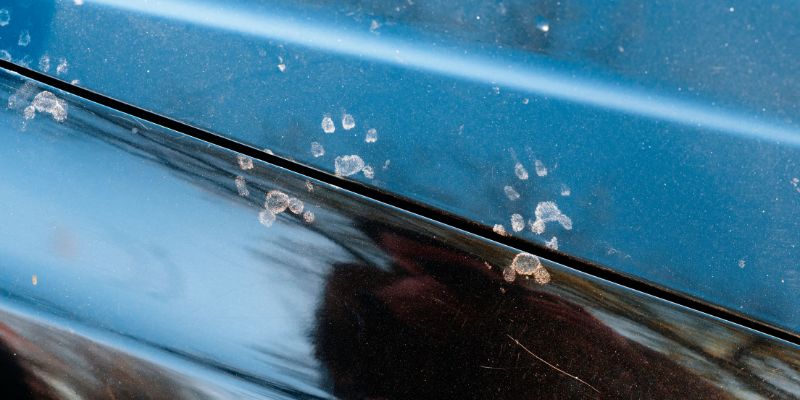Reliably repel martens – the double contact plate scares the animal away from its territory
Marten damage and insurance
In the event of marten damage, the insurance company will only pay for the damage incurred under certain conditions. Drivers who park their car on the street can expect martens to attack the cables of their spark plugs or the brake and coolant hoses of their cars, for example. If you only have liability insurance for your car, you are stuck with the repair costs. As insurance companies can nowadays set their own policy conditions, marten bites can also be insured differently depending on the insurance company and the policy. Some insurers offer a separate policy for marten damage and consequential damage. With other companies, it is covered under the partially comprehensive insurance. However, as partial casco insurance policies are usually taken out with an excess (usually 150 euros per claim) and this sum is offset in the event of damage, many partial casco insurance policies are not used for marten damage. In this case, the car owner bears the damage alone.
Why do martens bite?
There are various reasons why martens cause damage in the engine compartment. The marten does not actually eat the cables. The cables are bitten, scratched and nibbled by the marten in order to examine them. This is because martens are generally very interested animals. As adaptive animals, they like to explore new things. To explore new things, martens use their teeth and gnaw on everything. In this case, the marten has developed a preference for cables and hoses. One theory is that the rubber coating on cables smells very appealing to martens. And it is precisely in the engine compartment that the animals find what they are looking for and gnaw on cables and hoses.
However, the reason for the greater damage often has something to do with the rodents marking their territory. As is common in the animal kingdom, they use scent marks. This means, for example, that a car is assigned to the territory of a particular marten. The marking itself causes less damage, but rather when such a car mark is driven into another territory. The resident marten sees this as a hostile declaration of war and tries to drive it away. However, as it only finds the car, it takes out its aggression on the innocent car. This is not done by marking over the car, but by trying to destroy the car parts that smell of the rival. These are often cables and hoses.
The period between March and late summer is the mating season for martens. During this period, their potential for aggression is higher – and therefore the engine compartment of your car is particularly at risk.
What damage can occur?
There is direct marten damage and indirect consequential damage from a marten bite in a car. But what do the rodents most often target? Statistically speaking, ignition cables, coolant and windshield washer hoses, plastic hoses, power cables, insulation and materials for noise and heat insulation are the most popular targets. Marten bites on the turbo hose and in bellows also frequently lead to considerable damage. Less frequently, brake hoses, fuel lines, V-belts and tires are destroyed. If direct marten damage is detected quickly, the repair costs are still manageable: the cost of repairing bitten cables is between 250 and 400 euros.
How dangerous are consequential damages?
In contrast to direct marten damage, the consequential damage is significantly higher and more dangerous. The most expensive result of a marten bite is complete engine damage. If the radiator hose has been bitten by a marten and coolant has leaked out, the engine will overheat and cause engine damage. If rubber sleeves are bitten, it can be very dangerous. This is because the steering can be impaired if the protective device is broken. If the ignition cables are bitten, the drive unit and the catalytic converter are at acute risk and can therefore also cause unpleasant consequential damage.
However, the exact costs always depend on this:
- Which car parts did the marten destroy and how badly?
- When was the damage discovered?
- Was there already older damage?
Experience has shown that the costs of engine damage and the like are in the four-figure range.
How do I detect a marten bite or marten damage?
In most cases, a marten bite or marten damage can be recognized by paw tracks. Very often these tracks are mistaken for those of cats. However, these are usually marten tracks. This is because it is rare for cats to walk over a car. To clearly identify the track, a little tip: a marten has five toes on its front paws, whereas a cat has four. You can find more details here.
However, there are numerous other signs that a marten has been on or in the car. This is how you can detect marten damage:
- Paw marks on the paintwork
- Damaged cables and hoses such as the radiator hose
- Triangular, small bite marks and holes in the cables
- Marten excrement or strong urine odor
- Animal hair on the vehicle
- Leaking cooling water due to ruptured pipes
- Bite marks on cables and hoses
- Leaves, newspaper scraps or even food waste in the engine compartment
What does marten damage cost?
Cars are most at risk from marten damage. The engine compartment in particular, which is often still warm in the evening, is often chosen as a hiding place. It quickly becomes the marten’s “territory”, which it regards as its property. Martens are territorial, and if conspecifics try to invade this territory, the marten concerned becomes angry and begins to gnaw. If direct marten damage is detected quickly, the costs of repair are still manageable. Based on the figures published by the GDV (Gesamtverband der Deutschen Versicherungswirtschaft e.V. from November 2022), marten damage costs an average of around 450 euros. If the immediate damage is recognized in time and it is only a matter of bite marks on cables, costs of less than 150 euros can also be incurred. If an excess is provided for in the partially comprehensive insurance, these costs must be paid out of your own pocket. If marten damage remains undetected, it often results in costly consequential damage. Experience has shown that these cases, especially in the case of engine damage and the like, can be in the four-digit range.
What is the best marten repellent?
When it comes to marten defense, many vehicle owners first resort to simple means. Dog or cat hair in particular is known as a marten repellent. There are also marten sprays that are supposed to keep martens at bay with their scent. Toilet stones or mothballs are also often cited as marten repellents. However, it has not been proven that these defense methods are actually effective. Even the wire mesh fence under the car does not necessarily keep the marten away. It can merely cause them to look for another route.
There are several ways to drive away a marten professionally. There are numerous ways to keep martens out of attics and cars:
- Scent-based marten repellent
- Marten repellent with ultrasound
- Electric marten repellent
- Mechanical protection
- Pre-treatment – if the marten has already settled in the engine compartment
If you want to fend off martens successfully, the first step is to remove the scent mark left by a marten. Instead of a daring engine wash, the completely harmless STOP&GO scent mark remover is used here. Simply spray it on, leave it to work for a short time and rinse it off with water. The cleaning foam is harmless to plastics, rubber and paintwork and is therefore very easy to use.
High-voltage defense: There is only one solution to keep martens away from the car permanently: the use of electric current. Electrodes are attached to various points in the engine compartment. This works like an electric fence in a cow pasture. The marten bumps into the two bare metal plates and receives an electric shock, is deterred and turns away. Two button cells supply the necessary electric current. A harmless but appropriate electric shock is an effective means of keeping martens away from the car in the long term. The tested and certified high-voltage systems from STOP&GO are easily installed in the upper engine compartment for this purpose.
Ultrasonic defense: High-frequency sounds in the ultrasonic range are not pleasant for the marten’s sensitive ears. Although humans cannot perceive the high-frequency sounds, they do deter the rodent. Such a marten repellent or ultrasonic repellent device can easily be installed under the hood. It is usually either powered by its own batteries or connected to the vehicle battery. The acoustic system has the decisive advantage that the animal does not have to come into contact with the device. However, martens can become accustomed to the sound over time, which is why our devices use alternating frequencies to prevent this habituation effect from occurring.
Scent repellent / marten spray: After the necessary pre-treatment, the STOP&GO scent repellent can now be used. This is a fragrance concentrate with a long-lasting effect, which gives the marten the feeling that a “dangerous enemy” is at home here. The anti-marten scent can be used wherever martens are not wanted. In the engine compartment as well as in the carport, in the garden shed or in the attic. The scent discs are simply hung up and provide protection against unwanted rodents for up to 6 months. The spray is applied selectively to the self-adhesive scent discs and only needs to be refreshed once a month.
Mechanical protection: One effective method is the additional protection of cables and hoses. Special corrugated protective hoses are used as sheathing which the marten cannot bite through. This form of marten protection requires a little skill and is best carried out in an authorized workshop. The defense is particularly effective in conjunction with the high-voltage defense, which delivers a small electric shock in an emergency.
Marten damage insurance in comparison
Around 200,000 cases of marten damage are reported to car insurance companies every year. The total amount of damage: over 60 million euros. And these are just the comprehensive cases. Which insurance covers marten damage or consequential damage?
- Allianz: If you take out partial or fully comprehensive cover with Allianz, you can be sure that “animal bites” will be covered. Even consequential damage up to €10,000 is covered by the insurance.(Further information)
- Ergo: With Ergo insurance, the same applies to marten damage as with Allianz. Here the damage is defined as “damage caused by animal bites” and is covered. The same applies to consequential damage.(Further information)
- HDI: The HDI insurance writes “Damage caused by bites from martens or other animals in the engine compartment is also covered by the partial casco.” HDI will also compensate you for consequential damage of up to 10,000 euros caused by a marten bite.
What to do if the marten has bitten – our conclusion
Marten damage is one of the most common causes of partial accidental damage to motor vehicles. Your partially or fully comprehensive insurance pays for direct damage to components caused by a marten bite. In addition to the costs for the direct damage, however, there are often significantly higher sums due to consequential damage after marten damage (e.g. engine damage). Most insurance policies do not cover this in their basic cover. Car owners who frequently park their car outdoors are also at increased risk. They should protect themselves with marten repellent devices – in the following order.
Tip
To summarize, you can drive away a marten in two simple steps: Remove the scent mark using a scent mark remover, otherwise other martens will continue to be attracted. Purchase and install effective marten repellent products such as high-voltage devices, ultrasonic devices or scent disks.




